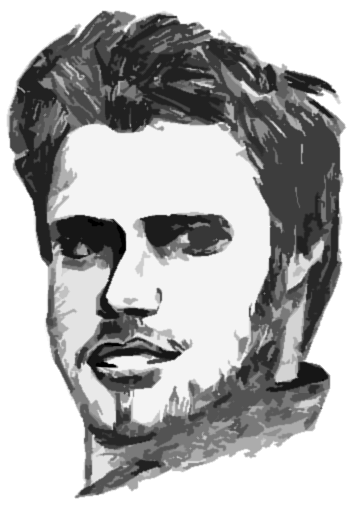Should Drawing Be Fun?
I must confess, there's something I don't know... at least two ideas have collided in my head. I had accepted both statements to be true but they suddenly seem mutually exclusive. What George Orwell called 'doublethink'.
1. The slower you go, the faster you learn.
2. Learning should be fun.
And of course, it's more complicated than that...
Right now I know I want to learn how to draw a human face in realistic proportions for my next comic project. I can free hand scratch out a pretty good attempt on one of the 'How to Draw' instructional books, and then having learnt something (like the standard unit of measurement for a face is in terms of eye width = the eyes are 1 eye apart, the nose is 1 eye wide etc.) I can move on practice some head tilts.
I accept as fact that the one way to learn how to draw is - to draw. You can leave it at that, draw and draw furiously and eventually you will tighten up your style and create drawings that have at least one fan.
That said, my old bass teacher really emphasised the 'the slower you learn the faster you learn' paradox. The really good guitarists know their scales inside and out, on bass or guitar. They have engraved rhythm into their muscles and that makes playing the difficult pieces seem easy. Or you can do what is fun and just learn a bunch of songs by rote. Fun now or fun later in other words.
If you know the fundamentals you can improvise, but the fundamentals are tedious and painstaking, whereas you can copy and trace artists you admire, but later you will depend on references for everything.
I'm pretty good at working from references freehand (as in not tracing) already, I think this is what people would call talent.
And technically I could most probably have powered my way through 3 instructional comic drawing technique books in the weeks I've spent on the first few pages. But I know, if I don't carve the realistic proportions into my muscle memory, it will result in painstaking trial and error character design later on. As in if I don't get a feel for when my characters proportions, I won't be able to improvise.
So for example I'm currently diong this:
These are the 'in proportion' guidelines I whipped up so I can practice a face 16 times in a row. Given that my instructional book is targeted at 12 year olds, it knows drawing is supposed to be fun, so it doesn't have a single phrase like 'repeat until you have it down then move on' or 'practice for '4 hours then move onto next exercise' its implied message is that you draw each picture once and move onto the next one.
SO I created this guideline exercise to streamline the tedious process of drawing up the guidelines. It reduces it down to my having to draw in the features and contours and expressions, but the aim is to do enough to get the jawline (the hardest make or break contour I'm finding) into my muscle memory so I can feel the proportions. I also have one for drawing in profile.
But you know something, after each one I complete, I find myself staring blankly, not thinking, not anything until I shake my head and think 'woah, how much time has passed?' and reluctantly draw the next one.
It most definitely isn't fun to do, not like drawing a cartoony figure, but the thing is that I can already draw cartoony figures and that I can see improvement the more I practice. I have no intention of drawing carbon copy realistic figures for my comics, but I just want the skills to improvise on this 'realistic' theme.
Eventually I want to draw more OTT realism like Greg Cappullo made big in the 90's with Spawn.
But honestly I don't know. I don't know if I wouldn't be better off just ploughing head first into what I want to do. Or whether the benefits I percieve in learning these tight realistic models are illusory.
I guess I'll find out if I give up.

No comments:
Post a Comment